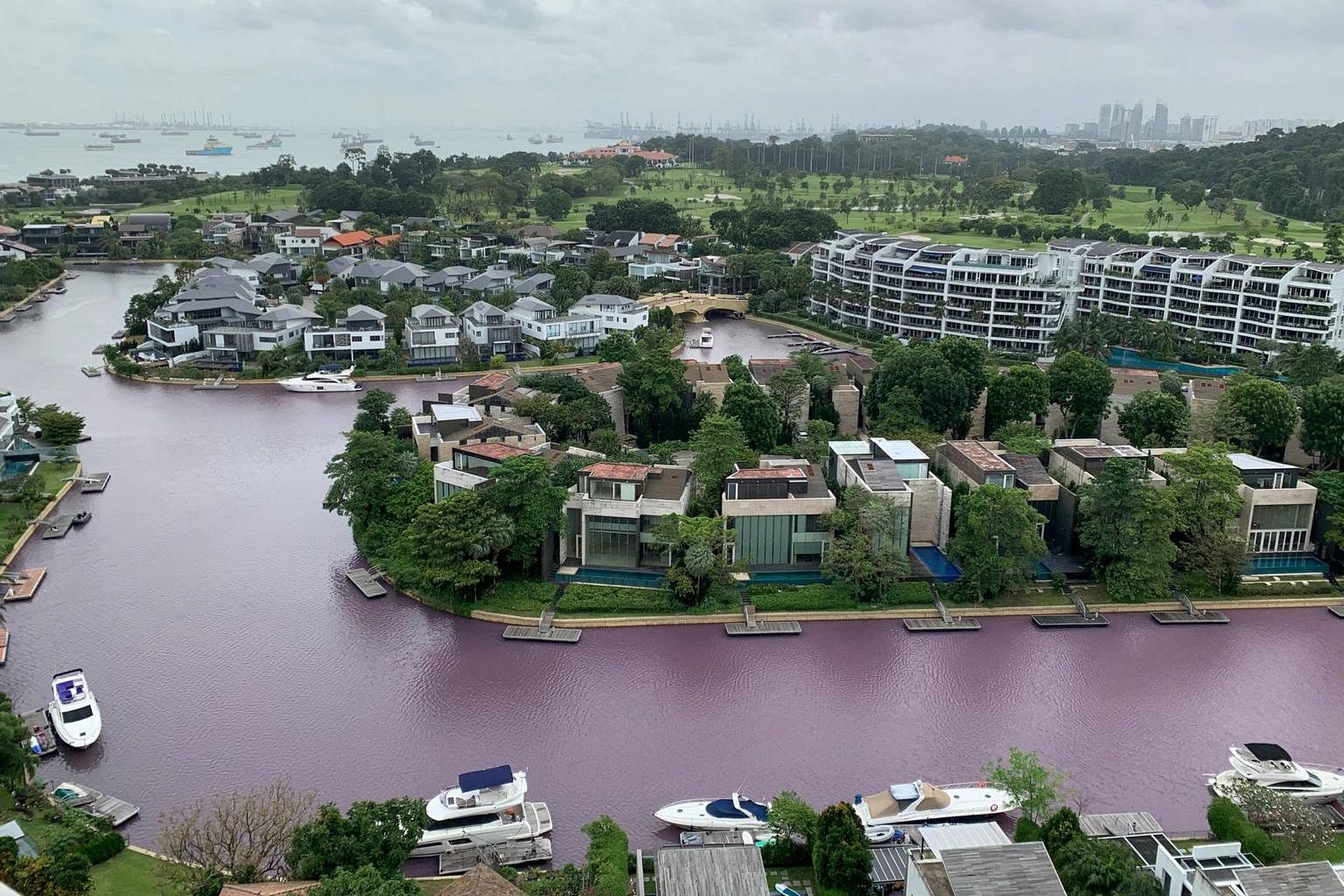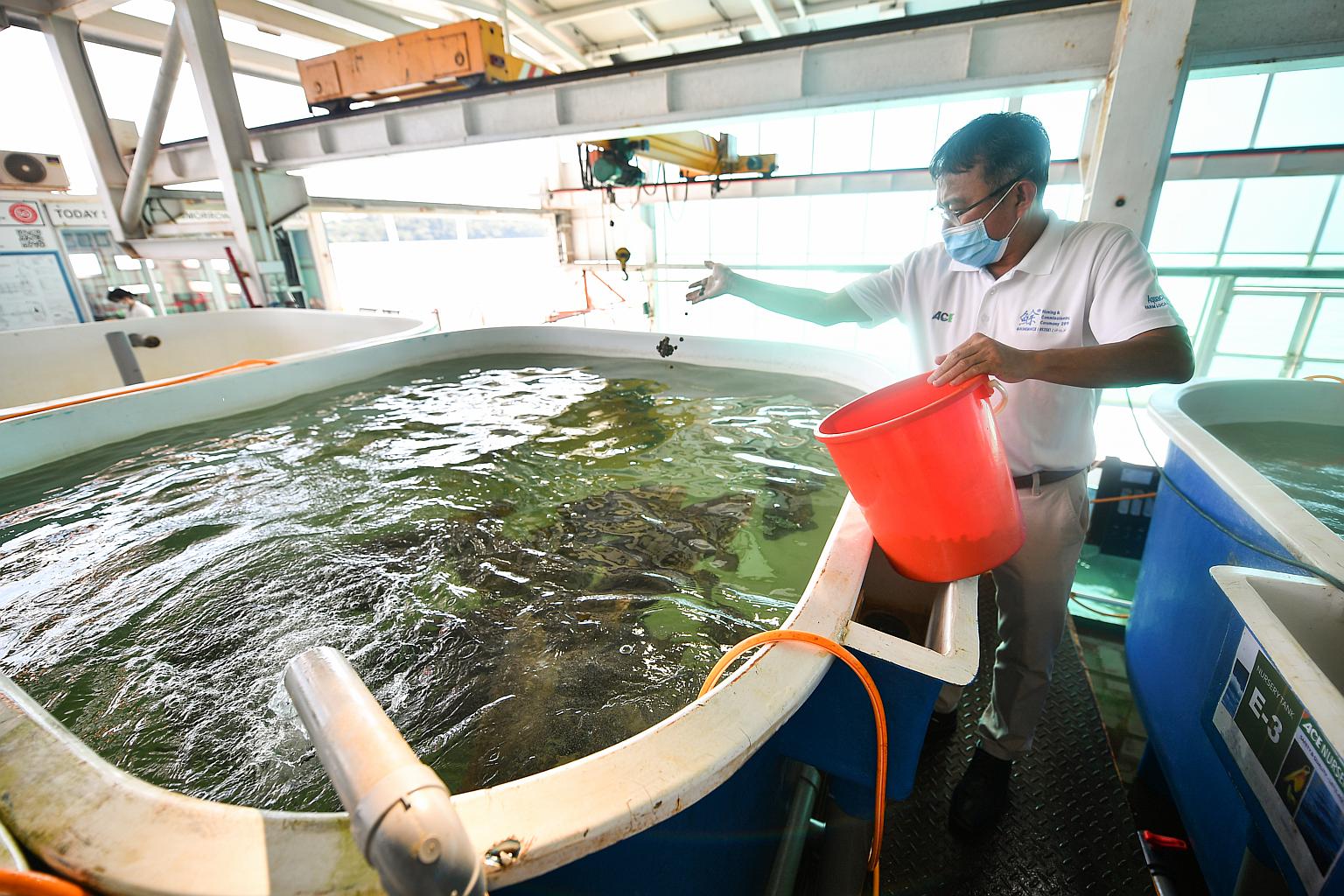More harmful algal blooms expected from intense aquaculture and human activities: UN report
Sign up now: Get ST's newsletters delivered to your inbox
Follow topic:
SINGAPORE - The world is on the alert for microscopic sea-dwelling algae that can multiply and smother the seas, causing swaths of the ocean to change colour and thousands of dead fish to bob on the surface.
This ocean hazard - called harmful algal blooms - is a global phenomenon that is rising in step with increasing fisheries, coastal development and marine exploitation, a first-of-its-kind study by the United Nations has found.
Over 9,500 blooms have been reported globally over the past 33 years, the study led by Unesco's Intergovernmental Oceanographic Commission, has found.
Though harmful algal bloom events have increased in some regions, there has been no significant changes in South-east Asia, with the number of events holding steady.
But aquaculture - a key cause of algal blooms - has risen 16-fold from 1985 to 2018, with the largest increases seen in South-east Asia, and South and Central America.
The seven-year study by 109 scientists, published in Nature's Communications Earth & Environment journal on Tuesday (June 8), said the increase in coastal fish farms has been a key driver for disastrous economic impacts from harmful algal blooms.
Such blooms are mainly caused by changing water and environmental conditions, such as rainfall patterns and the loading of nutrients into the seas.
In fish farms, fish feed and waste materials are forms of additional nutrients released into the sea. Microalgae devour the nutrients and multiply drastically, eventually causing fish to die from lack of oxygen.
Some algae, armed with "weapons", can also damage fish gills.
Some microalgae produce toxins that can cause serious health issues and poisoning in humans if they eat diseased seafood.
Singapore - an island-state with its coasts bustling with fish farms, water treatment plants and land reclamation, has not been spared from harmful algal blooms.
In mid-January, residents of Sentosa Cove were astounded to see a usually pristine waterway turn pinkish-purple. A week earlier, throngs of dead fish were seen near the banks.

A 2021 local review paper on harmful algal blooms and aquaculture listed 22 reported events between 1987 and 2017. Most occurred in the Strait of Johor in the north, where most of the island's over 100 sea-based fish farms are located.
There are various reasons the strait is susceptible to harmful algal blooms. For instance, a 2014 study published in the Raffles Bulletin of Zoology noted that seasonal monsoons can change the salinity of the water, which then affect the growth of microalgae. Shipping and industrial activities also lead to discharge and turbulent waters.
The Singapore Food Agency (SFA) will be studying how fish farming impacts the water quality of the East Johor Strait, to minimise and mitigate events such as algal blooms and bacteria that affect fish health.
In the future, climate change will also drive up the frequency and severity of harmful algal blooms.
According to the United States Environmental Protection Agency, when the ocean becomes warmer, the surface waters will stay at the top, as they are less dense. This means that the surface waters will not mix properly, and algae will grow thicker and faster, stealing oxygen from other marine life and blocking off their sunlight.
"Climate change, anthropogenic impacts and environmental impacts are contributing worldwide to this phenomenon, and there's no way you are going to have fewer algal blooms, unless you stop dumping nutrients into the water. And I don't see that happening right away," said Associate Professor Federico Lauro from Nanyang Technological University's Asian School of the Environment.
However, the UN study noted that at this point, the widely stated view that harmful algal blooms are on the rise throughout the world, perhaps due to climate change, is not confirmed.
Dr Adriana Zingone, one of the UN study's authors from the Italian research institute Stazione Zoologica Anton Dohrn, told The Straits Times: "The more we need to exploit marine resources, the more we will detect new harmful algal blooms, including those that might have occurred earlier but had never been noticed because of lack of studies or human activities in that area."
The study's lead author, Professor Gustaaf Hallegraeff of the University of Tasmania, said intensified aquaculture has led to an increase in algal bloom monitoring efforts, which is crucial to sustain the industry and protect people's health.
In Singapore, aquaculture is here to stay, as it is part of the nation's vision of producing 30 per cent of its nutritional needs to boost food security.

Aquaculture Centre of Excellence CEO Leow Ban Tat feeding broodstock on the Eco-Ark, one of the closed-loop fishing farms, on May 10, 2021.
ST PHOTO: LIM YAOHUI
The SFA has been encouraging sea-based fish farms to minimise the impact of blooms and other environmental issues by adopting high-tech farming methods. One such method is recirculating aquaculture systems in closed-loop fish farms, where seawater is constantly reused with hardly any waste discharged.
The UN study has also created the world's first database of harmful algal blooms, so scientists can track their locations, frequency and impact across the globe, and how climate change could alter the phenomenon.
The study's researchers also hope the paper will spark more investigations into algal blooms in individual countries.
"Our study will hopefully stimulate site-by-site studies to clarify the local trends that, after all, are those that really matter," said Dr Zingone.

